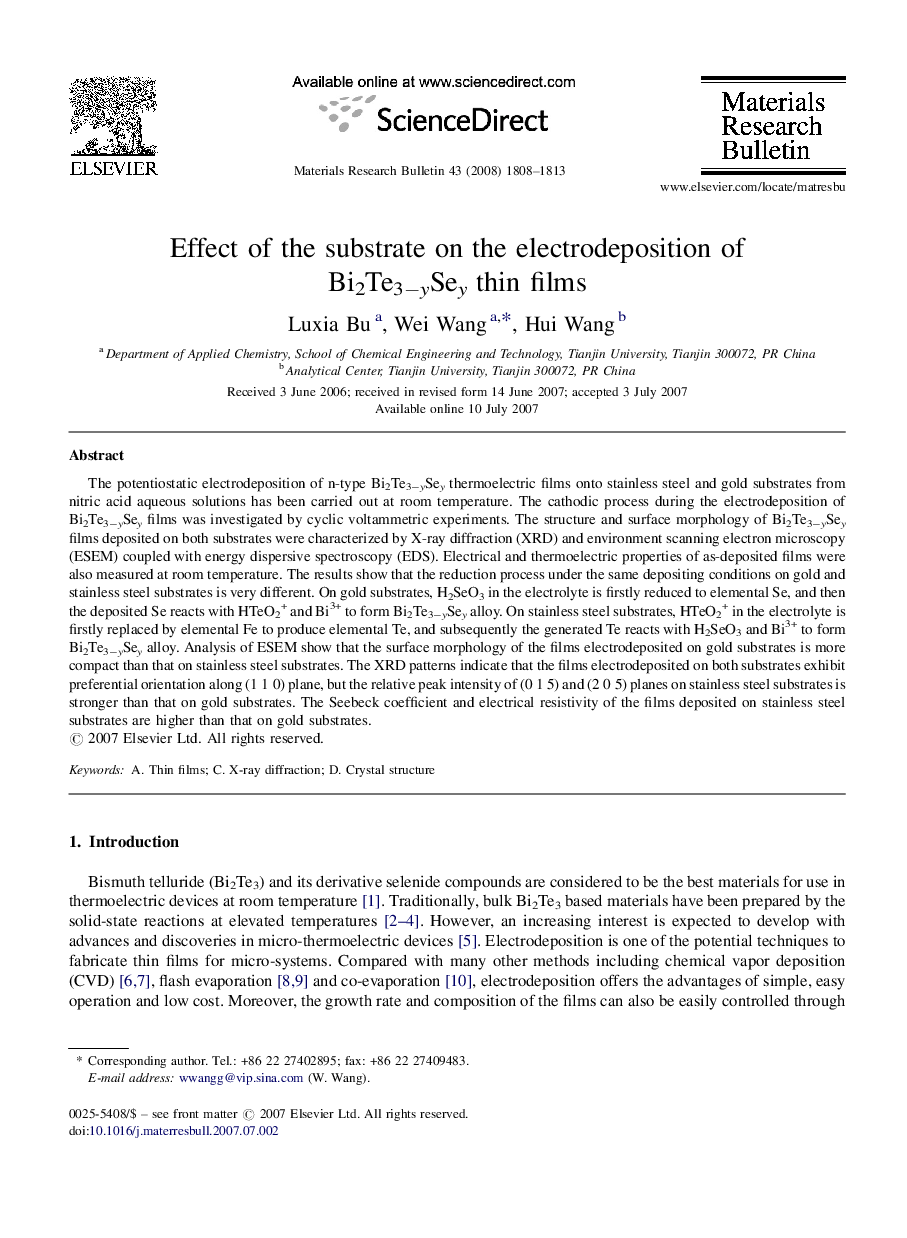| Article ID | Journal | Published Year | Pages | File Type |
|---|---|---|---|---|
| 1492252 | Materials Research Bulletin | 2008 | 6 Pages |
The potentiostatic electrodeposition of n-type Bi2Te3−ySey thermoelectric films onto stainless steel and gold substrates from nitric acid aqueous solutions has been carried out at room temperature. The cathodic process during the electrodeposition of Bi2Te3−ySey films was investigated by cyclic voltammetric experiments. The structure and surface morphology of Bi2Te3−ySey films deposited on both substrates were characterized by X-ray diffraction (XRD) and environment scanning electron microscopy (ESEM) coupled with energy dispersive spectroscopy (EDS). Electrical and thermoelectric properties of as-deposited films were also measured at room temperature. The results show that the reduction process under the same depositing conditions on gold and stainless steel substrates is very different. On gold substrates, H2SeO3 in the electrolyte is firstly reduced to elemental Se, and then the deposited Se reacts with HTeO2+ and Bi3+ to form Bi2Te3−ySey alloy. On stainless steel substrates, HTeO2+ in the electrolyte is firstly replaced by elemental Fe to produce elemental Te, and subsequently the generated Te reacts with H2SeO3 and Bi3+ to form Bi2Te3−ySey alloy. Analysis of ESEM show that the surface morphology of the films electrodeposited on gold substrates is more compact than that on stainless steel substrates. The XRD patterns indicate that the films electrodeposited on both substrates exhibit preferential orientation along (1 1 0) plane, but the relative peak intensity of (0 1 5) and (2 0 5) planes on stainless steel substrates is stronger than that on gold substrates. The Seebeck coefficient and electrical resistivity of the films deposited on stainless steel substrates are higher than that on gold substrates.
